
Ulmus parviflora - Plant
(MRP Inclusive of all taxes)
- Shipping ₹79 for entire order
- Dispatch in 7 days
- Country of origin: India

(MRP Inclusive of all taxes)
 Save 29%
Save 29%
Air Purifier Money Plant with Pot The Air Purifier Money Plant, also known as Pothos or Epipremnum aureum, is a stunning indoor plant that...
View full details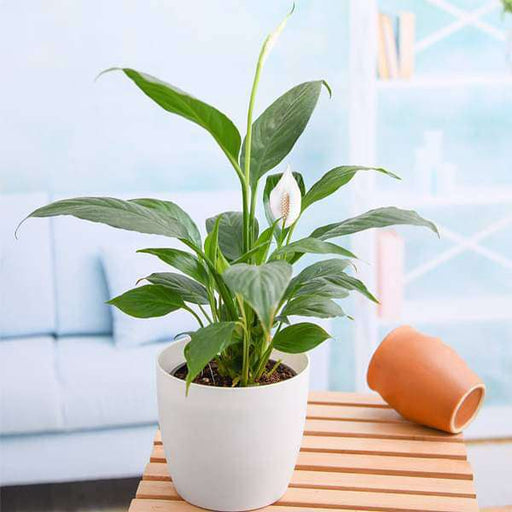
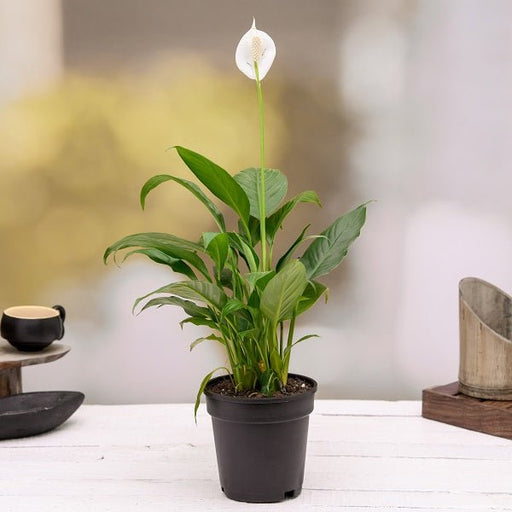 Save up to 15%
Save up to 15%
Peace Lily, Spathiphyllum - Plant The Peace Lily, scientifically known as Spathiphyllum, is a stunning houseplant celebrated for its elegant white...
View full details
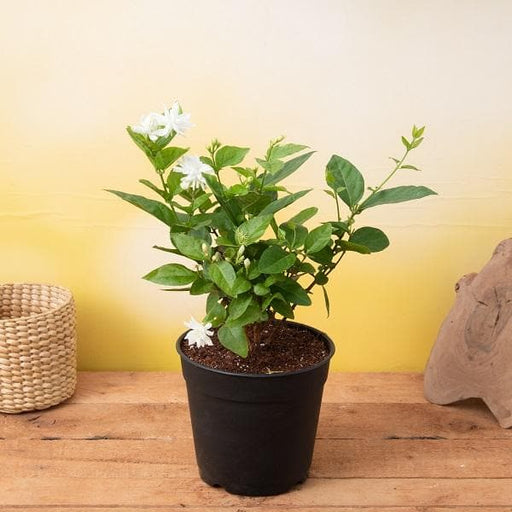 Save 25%
Save 25%
Jasminum sambac, Mogra, Arabian Jasmine - Plant Jasminum sambac, commonly known as Mogra or Arabian Jasmine, is a fragrant flowering plant...
View full details
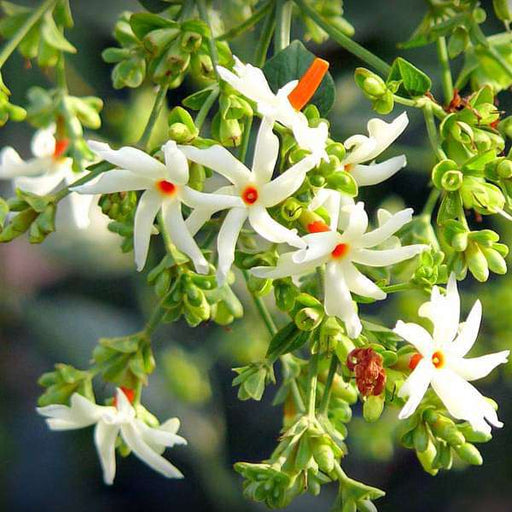 Save 18%
Save 18%
Combo Constituents Includes the Parijat Tree (Night-Flowering Jasmine), a culturally significant plant with fragrant flowers. Description The Pari...
View full details
 Save 25%
Save 25%
Miniature Rose, Button Rose (Any Color) - Plant The Miniature Rose, also known as the Button Rose, is a charming and compact flowering plant that ...
View full details Save 25%
Save 25%
Damascus Rose, Scented Rose (Any Color) - Plant The Damascus Rose, also known as Rosa damascena, is a timeless symbol of beauty and romanc...
View full details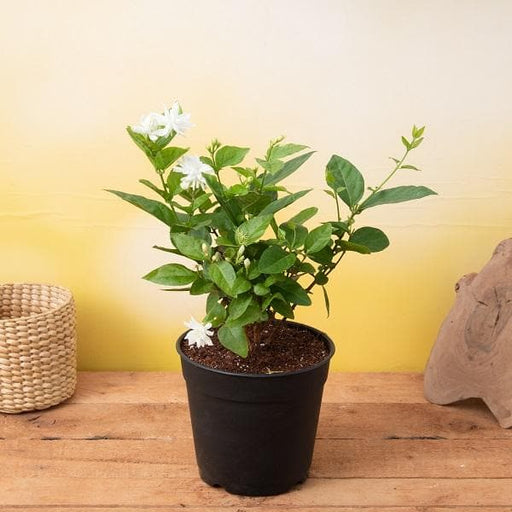
 Save 17%
Save 17%
Beautiful Fragrant Mogra, Arabian Jasmine Plant with Pot The Beautiful Fragrant Mogra, also known as Arabian Jasmine (Jasminum sambac), is...
View full details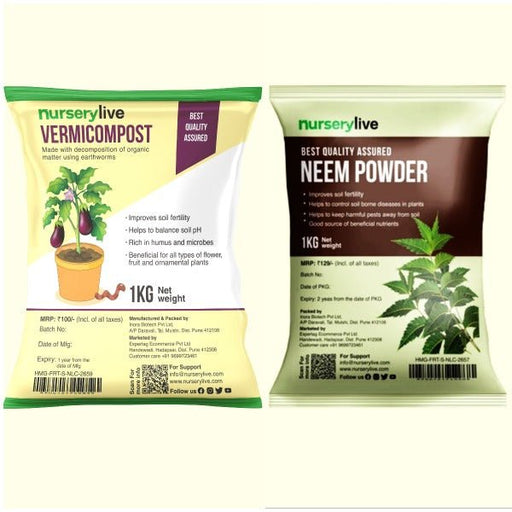 Save 15%
Save 15%
Pack of Vermicompost and Neem Cake for House Plants Transform your indoor garden with our premium Pack of Vermicompost and Neem Cake, spec...
View full details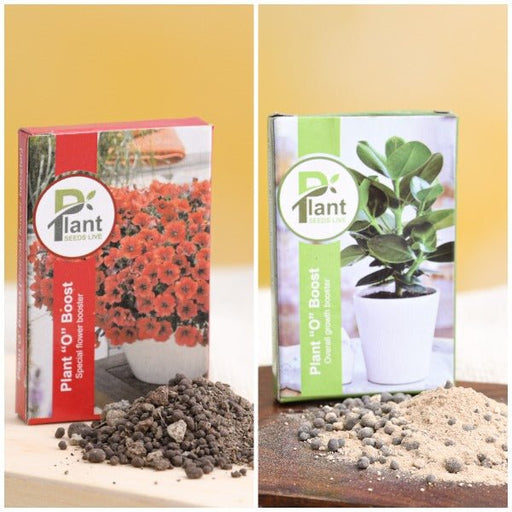
Pack of Plant Growth and Flower Boosters Unlock the full potential of your garden with our Pack of Plant Growth and Flower Boosters! This ...
View full details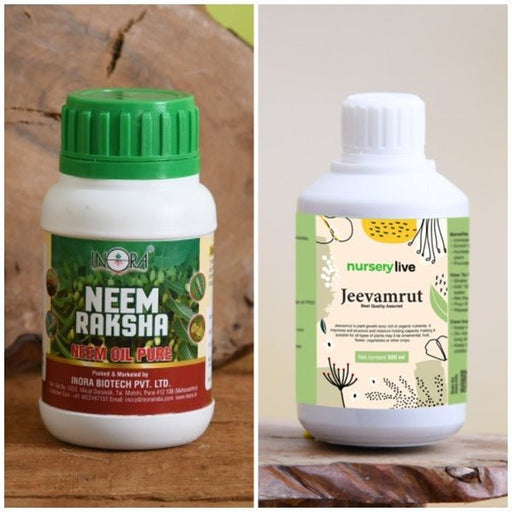 Save 38%
Save 38%
Combo of Jeevamrut and Neem Raksha for Easy Growth and Protection of Houseplants Transform your indoor garden with our exclusive combo of ...
View full details Save 22%
Save 22%
Plant Nutrients Kit (Pack of 16) for a Healthy Garden Transform your garden into a lush paradise with our Plant Nutrients Kit, featuring 1...
View full details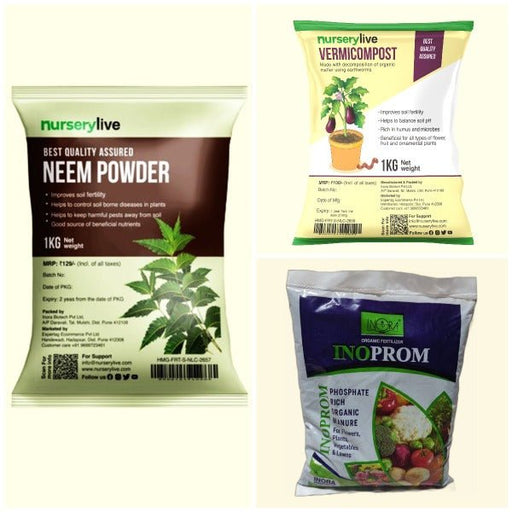 Save 16%
Save 16%
Combo of Top Plant Fertilizers Elevate your gardening game with our exclusive Combo of Top Plant Fertilizers, featuring two bags of premiu...
View full details Save 24%
Save 24%
Pack of 4 Additives to Make Soil Healthy and Nutrient Rich Transform your garden into a thriving ecosystem with our Pack of 4 Additives de...
View full details Save 30%
Save 30%
Transform your gardening experience with our premium Combo of Perlite and Vermiculite. This unique blend is designed to enhance soil aeration and ...
View full details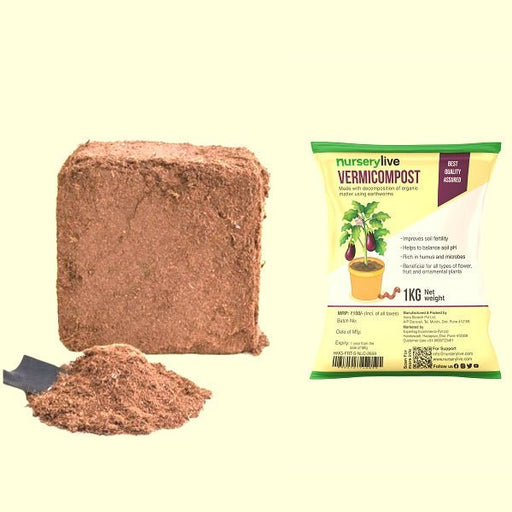 Save 27%
Save 27%
Combo of 2 Vermicompost and Cocopeat - Enrich Your Soil Naturally! Transform your garden into a thriving ecosystem with our Combo of 2 Ver...
View full details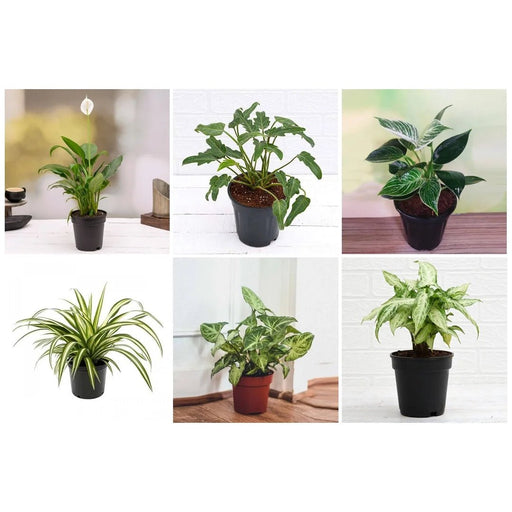
 Save 35%
Save 35%
Best 6 Plants for Perfect Indoor Garden Transform your living space into a lush oasis with our curated collection of the Best 6 Plants for a...
View full details
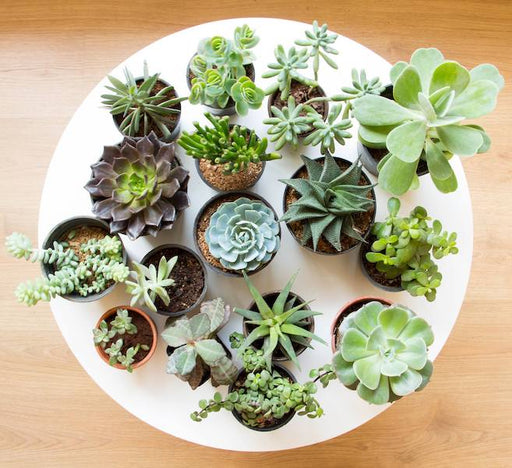 Save up to 50%
Save up to 50%
Mini Succulent Garden Pack Transform your space with our Mini Succulent Garden Pack, featuring a delightful collection of 4 any variety beautiful s...
View full details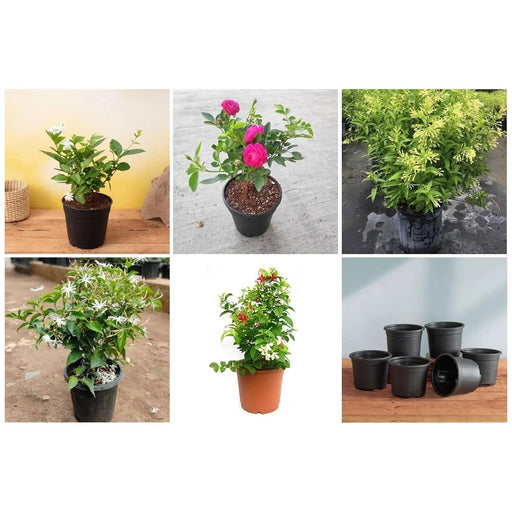
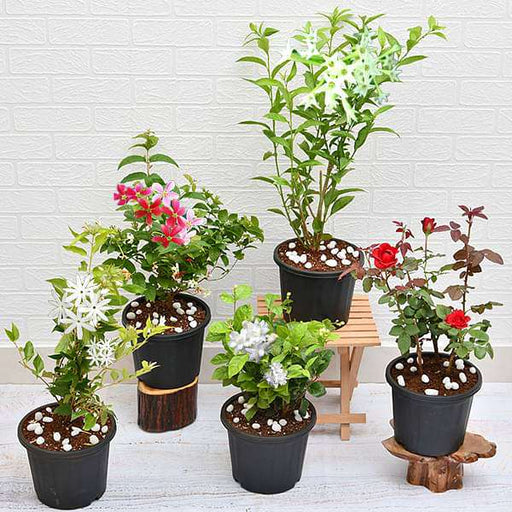 Save 30%
Save 30%
5 Best Fragrant Plants Transform your garden or indoor space into a fragrant paradise with our curated selection of the 5 Best Fragrant Plants. Th...
View full details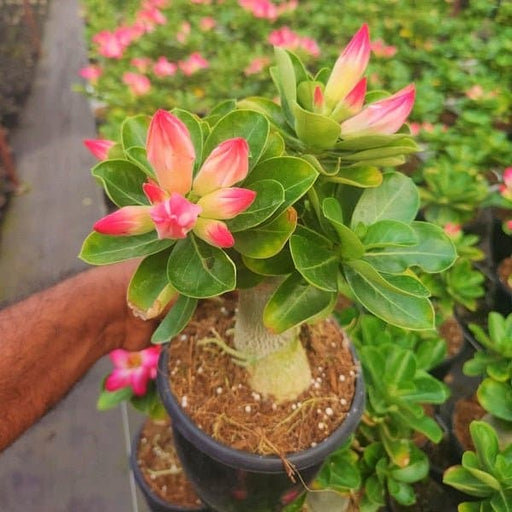
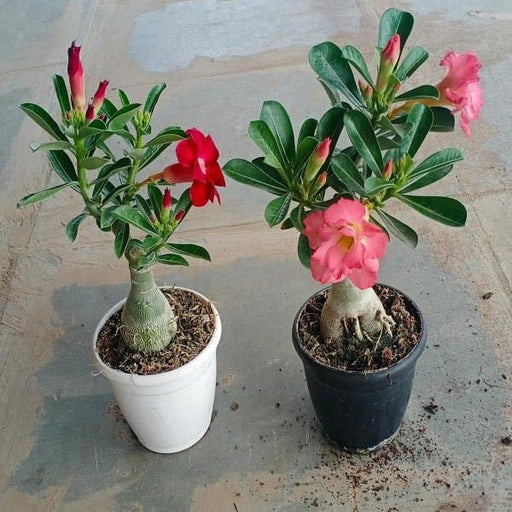 Save 24%
Save 24%
Set of 2 Bonsai Looking Grafted Adeniums Transform your indoor or outdoor space with our exquisite Set of 2 Bonsai Looking Grafted Adenium...
View full details Save 45%
Save 45%
Top 4 Die Hard Succulents Pack Transform your indoor or outdoor space with our Top 4 Die Hard Succulents Pack, featuring a curated selecti...
View full details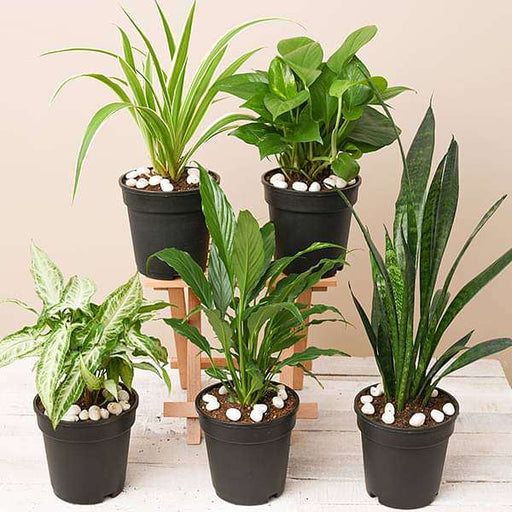
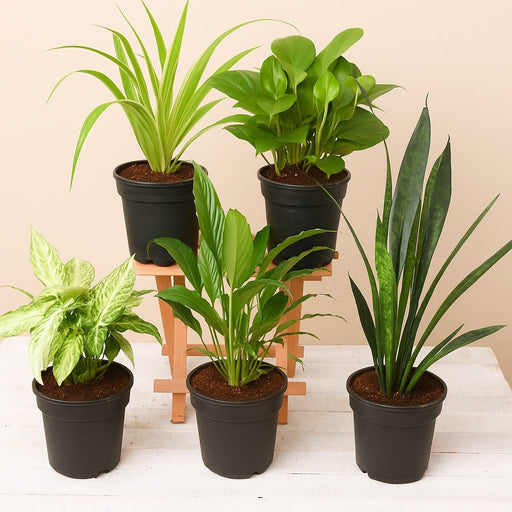 Save 30%
Save 30%
5 Best Indoor Plants Pack Transform your living space into a lush oasis with our '5 Best Indoor Plants Pack.' This carefully curated collection fe...
View full details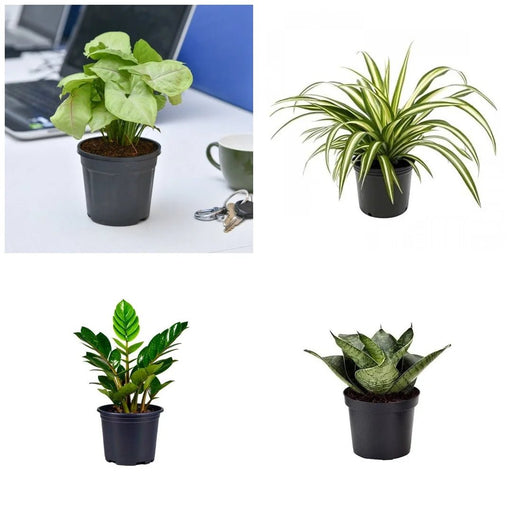
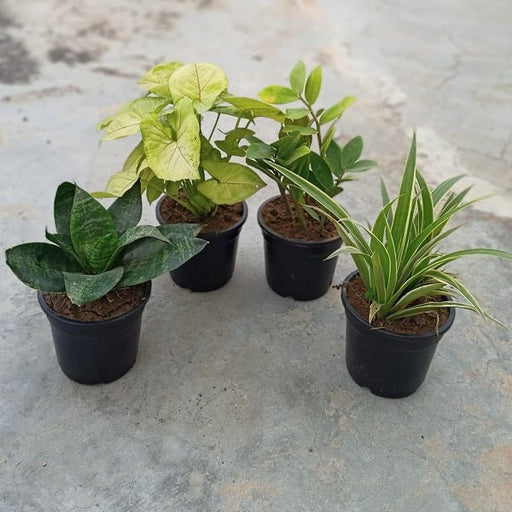 Save 25%
Save 25%
Set of 4 Evergreen Air Purifier Plant Pack Transform your indoor space into a lush, green oasis with our Set of 4 Evergreen Air Purifier Pla...
View full details| SrNo | Item Name |
|---|---|
| 1 | Ulmus parviflora - Plant |
Ulmus parviflora, commonly known as the Chinese Elm, is a deciduous tree native to East Asia. Renowned for its resilience and adaptability, this species can thrive in various soil types and climates, making it a popular choice for urban landscaping and bonsai enthusiasts. With its attractive, serrated leaves and distinctive, twisting branches, the Chinese Elm adds a touch of elegance to any garden or indoor space.
What makes Ulmus parviflora special is its remarkable ability to withstand drought and pollution, making it an ideal choice for urban environments. Its fast growth rate and longevity, often exceeding 100 years, further enhance its appeal. This tree not only beautifies landscapes but also contributes positively to the environment by improving air quality and providing shade.
One of the standout features of the Chinese Elm is its unique bark, which peels away in thin strips, revealing a smooth, light-colored surface underneath. This characteristic, combined with its stunning fall foliage, makes it a visually striking addition to any garden. Additionally, its small, inconspicuous flowers attract various pollinators, supporting local ecosystems.
If you think caring for a tree is as easy as watering a houseplant, think again! Ulmus parviflora, or the Chinese elm, requires a bit of finesse. This tree thrives in well-drained soil and loves a good sunbath, but don’t let it get too hot under the collar. Regular pruning keeps it looking sharp, while occasional pest checks ensure it doesn’t host any unwanted guests. Remember, a happy tree is a healthy tree, so give it the TLC it deserves!
Who knew a tree could be such a multitasker? The Ulmus parviflora not only beautifies your garden but also provides shade, reduces air pollution, and even supports local wildlife. Birds love to nest in its branches, and its leaves are a feast for various critters. Plus, it’s a champion at erosion control. So, plant one and let it do its thing while you sip lemonade in the shade!
If you’re looking for a tree that grows faster than your neighbor’s gossip, the Ulmus parviflora is your go-to! This speedy grower can reach impressive heights in just a few years. With the right conditions, it can add several feet to its stature annually. Just be prepared to keep up with its rapid growth; you might need a ladder to prune those branches before you know it!
Want to play tree matchmaker? Propagating Ulmus parviflora is easier than you think! You can take cuttings or even try your hand at seed propagation. Just remember to give those cuttings a cozy home in moist soil and watch them root like they’re auditioning for a gardening reality show. Before long, you’ll have a mini forest of Chinese elms ready to take over your yard!
Every tree has its foes, and the Ulmus parviflora is no exception. Aphids, spider mites, and scale insects can be the unwelcome party crashers in your garden. But fear not! A little neem oil or insecticidal soap can send them packing. Keep an eye out for these pesky invaders, and your tree will remain the belle of the botanical ball!
Just like humans, trees can catch a cold—or in this case, a disease. The Ulmus parviflora can fall victim to issues like Dutch elm disease or powdery mildew. Regular inspections and good cultural practices can help keep your tree in tip-top shape. If you spot any signs of distress, don’t hesitate to consult an arborist. After all, a healthy tree is a happy tree!
Looking to add a touch of elegance to your garden? The Ulmus parviflora is a landscape designer’s dream! Its graceful form and lush foliage make it a stunning focal point or a perfect backdrop for your flower beds. Whether you’re going for a modern minimalist look or a classic cottage garden vibe, this tree can adapt to your style like a chameleon in a paint store.
Soil is like a tree’s best friend, and the Ulmus parviflora is no exception. This tree prefers well-drained, loamy soil that’s rich in organic matter. It’s not too picky, but it does have a soft spot for slightly acidic to neutral pH levels. So, if you want your tree to thrive, give it a cozy bed of quality soil, and it will reward you with lush growth and vibrant leaves!
Sunlight is the secret sauce for a thriving Ulmus parviflora. This tree loves basking in full sun but can tolerate partial shade like a pro. Just remember, too much shade can lead to leggy growth and a less-than-stellar appearance. So, find a sunny spot in your yard, and let your tree soak up those rays while you enjoy the shade it provides!
Watering an Ulmus parviflora is like giving it a refreshing drink after a long run. This tree enjoys regular watering, especially during its early years. However, it’s not a fan of soggy feet, so make sure the soil drains well. A good rule of thumb is to water deeply but infrequently, allowing the roots to stretch and grow. Your tree will thank you with vibrant foliage and robust growth!
The Ulmus parviflora is not just a pretty face; it’s a versatile tree with a variety of uses! From providing shade in your backyard to serving as a windbreak, this tree is a true utility player. Its wood is also prized for furniture and cabinetry, making it a favorite among craftsmen. So, whether you’re looking for beauty or functionality, this tree has got you covered!
Ulmus parviflora, also known as the Chinese elm, is a charming deciduous tree that boasts a graceful, spreading canopy. With its small, serrated leaves and rugged bark, it’s like the tree version of a well-dressed gentleman—stylish yet sturdy. Perfect for urban landscapes, it’s a favorite among gardeners who appreciate both beauty and resilience.
Ulmus parviflora is like that overachieving friend who finishes projects ahead of schedule. This tree can grow up to 3 feet per year under ideal conditions. With its rapid growth rate, it quickly transforms your garden into a leafy oasis, making it a popular choice for those who want instant shade and beauty.
Ulmus parviflora thrives in well-drained soil and loves full sun, but it’s not picky—like a tree with a taste for adventure! It can tolerate drought and poor soil, making it a resilient choice for various climates. Just remember, it prefers a little room to spread its roots and show off its leafy glory.
Absolutely! Ulmus parviflora is like the superhero of the tree world when it comes to pest resistance. It’s less susceptible to common pests like aphids and caterpillars, making it a low-maintenance option for gardeners. So, you can sit back and enjoy its beauty without worrying about uninvited guests munching on its leaves.
Yes, indeed! Ulmus parviflora is a tough cookie that can withstand cold temperatures down to USDA zone 5. It’s like that friend who insists on going out in winter without a coat. Just make sure to provide some protection during extreme cold spells, and this tree will keep standing tall and proud through the frost.
Watering Ulmus parviflora is like giving your friend a drink at a party—just enough to keep them happy! During the first year, regular watering is essential to establish roots. After that, it’s quite drought-tolerant. Just check the soil; if it’s dry a couple of inches down, it’s time to give it a sip!
Pruning Ulmus parviflora is best done in late winter or early spring before new growth begins. Think of it as giving your tree a stylish haircut just before the big season. This helps maintain its shape and encourages healthy growth, ensuring it looks fabulous all year round—like a tree ready for a fashion show!
Yes, Ulmus parviflora does produce seeds, but don’t worry, it’s not planning a tree takeover! The small, winged seeds are dispersed by the wind, allowing new trees to sprout in the wild. If you’re not keen on a mini-forest in your yard, just keep an eye out and manage those little sproutlings.
Absolutely! Ulmus parviflora is like the ultimate urbanite—adaptable and stylish. It tolerates pollution, compacted soil, and limited space, making it a perfect fit for city parks and streets. With its graceful form and resilience, it brings a touch of nature to concrete jungles, proving that trees can thrive even in the hustle and bustle.
Ulmus parviflora can reach heights of 40 to 60 feet, making it a majestic addition to any landscape. It’s like the tall friend in your group who always stands out in a crowd. With its broad canopy, it provides ample shade, making it a favorite for those lazy summer picnics under its leafy embrace.
Absolutely! Ulmus parviflora is a popular choice for bonsai enthusiasts, thanks to its small leaves and flexible branches. It’s like the tree that’s always ready for a makeover! With proper care and pruning, you can create a stunning miniature masterpiece that will impress your friends and make your garden the talk of the town.